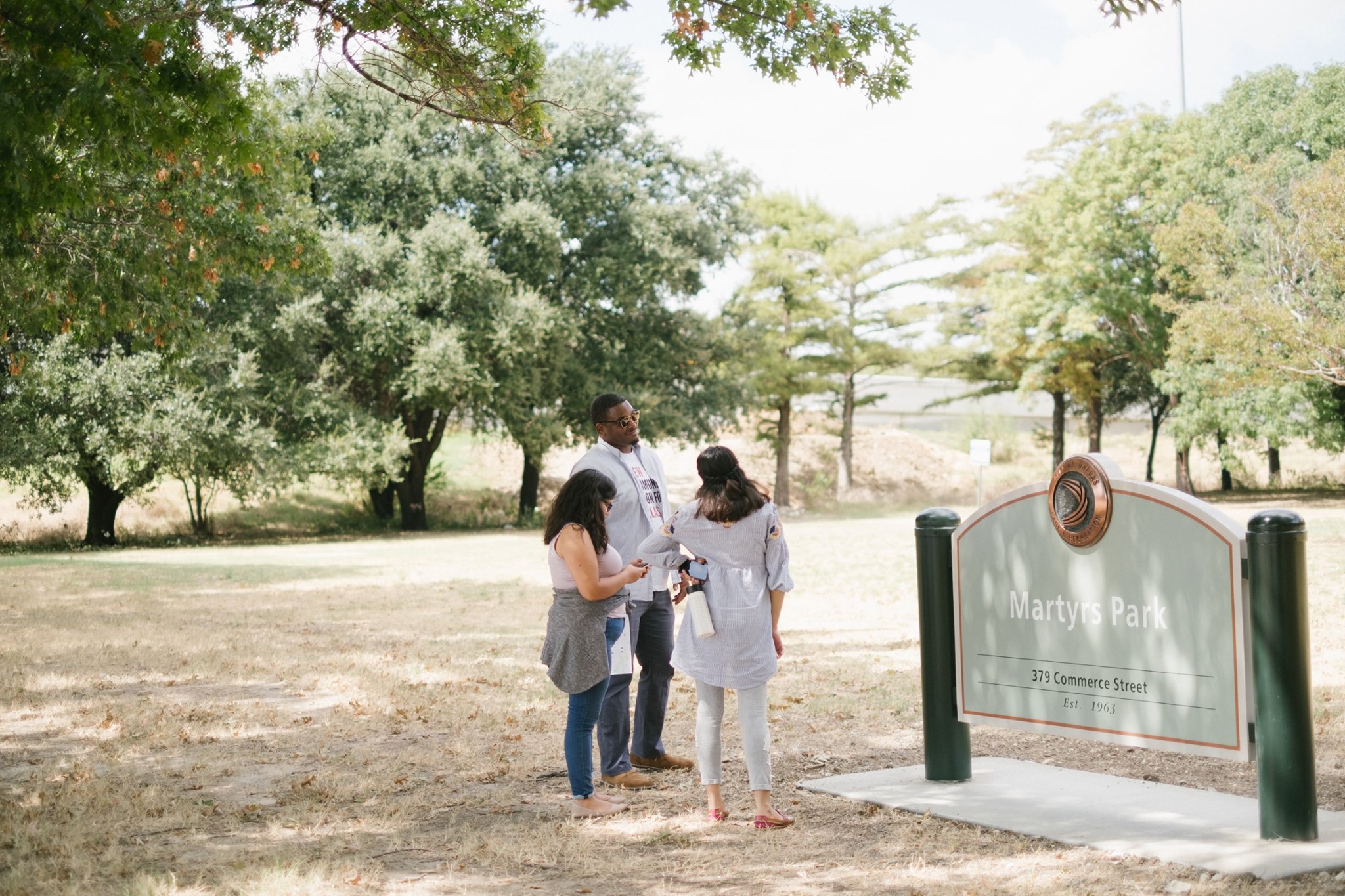Racial Equity NOW Tour – Martyr’s Park & Dealey Plaza

How do you change the narrative about place? During this month’s Racial Equity NOW Cohort Session, Dallas TRHT Director Jerry Hawkins led a history-focused bus tour of Dallas. Follow along in this blog series as we explore the history of our stops in more detail.
Martyr’s Park & Dealey Plaza (The Grassy Knoll/JFK)

The Park and Recreation Board renamed the former Dealey Annex Martyrs Park in 1991. The name change came after a three-year-long push by scholars and activists who “named it and claimed it” against the wishes of some parks officials at the time.

In 1860, white Dallas was terrified by rumors of a coming slave insurrection after downtown buildings caught on fire, and one newspaper editor, Charles Pryor, of the Dallas Herald “instigated a statewide panic about a slave revolt inspired by abolitionist outsiders.”

Fifty-two of Dallas’ business owners formed the Committee of Vigilance, which insisted the conflagration was the work of slaves doing the bidding of abolitionist preachers. Every enslaved person in Dallas was rounded up and tortured, their children threatened, until the committee decided to punish three scapegoats: Patrick Jennings, property of a Dallas attorney; Sam Smith, an enslaved preacher; and Cato, who ran a mill owned by the Overton family.

They were taken to gallows along the Trinity River bottoms and lynched (hung). Dealey Plaza is sometimes called the “birthplace of Dallas.”

It also was the location of the assassination of U.S. President John F. Kennedy, on November 22, 1963.


This is the input I have given to the Dallas Office of Cultural Affairs for the Memorial for Racial Violence in Martyrs Park.
Until an accurate history can be memorialized and publicly admitted, we will have no real progress in race relations. To have an accurate memorial to racial violence in Dallas is a first step.
The memorial must be designed to be open to corrections and expansions as more facts are documented and added to the historical record. But first we need a place to start.
The Martyrs Park Memorial location has wonderful potential due to the proximity to the JFK Assassination site and the actions of President Kennedy to continue the work toward the Civil Rights Act in his June 1963 radio address, 5 months before his death in Dallas. The entry to the walkway to Martyrs Park should have a Historical Marker to this June event placed to draw tourists from the Kennedy Assassination Site to a Black History timeline going back in history from 1963 to the most well documented deaths, the 1853 hanging of Jane Elkins and the triple hangings, near the location of Martyrs Park, in 1860. (One vision of this memorial is in Bill Betzen’s Blog in October of 2017 under the title of “Dallas Martyrs Park and John F. Kennedy”)
Between 1853 and June of 1963 Black History called out for the values reflected in the June radio address by President Kennedy. Major parts of that history from 1963 back to 1853 can be illustrated along the walls in the walkway going from the Grassy Knoll near the Assassination Site to the location of Martyrs Park. Some of the potential events of this Black History Timeline were documented in an exhibit in the Shotgun House at Dallas Heritage Village in 2017. (Photos of that exhibit can be seen in Bill Betzen’s Blog for November of 2017 under the title of “Dallas Black History Timeline”)
These components and this history could draw additional hundreds, even thousands, to visit Dallas and Martyr’s Park daily.
Here is a powerful summary of the background we now work within regarding uncovering true history before and about the Civil War: https://www.smithsonianmag.com/history/how-i-learned-about-cult-lost-cause-180968426/